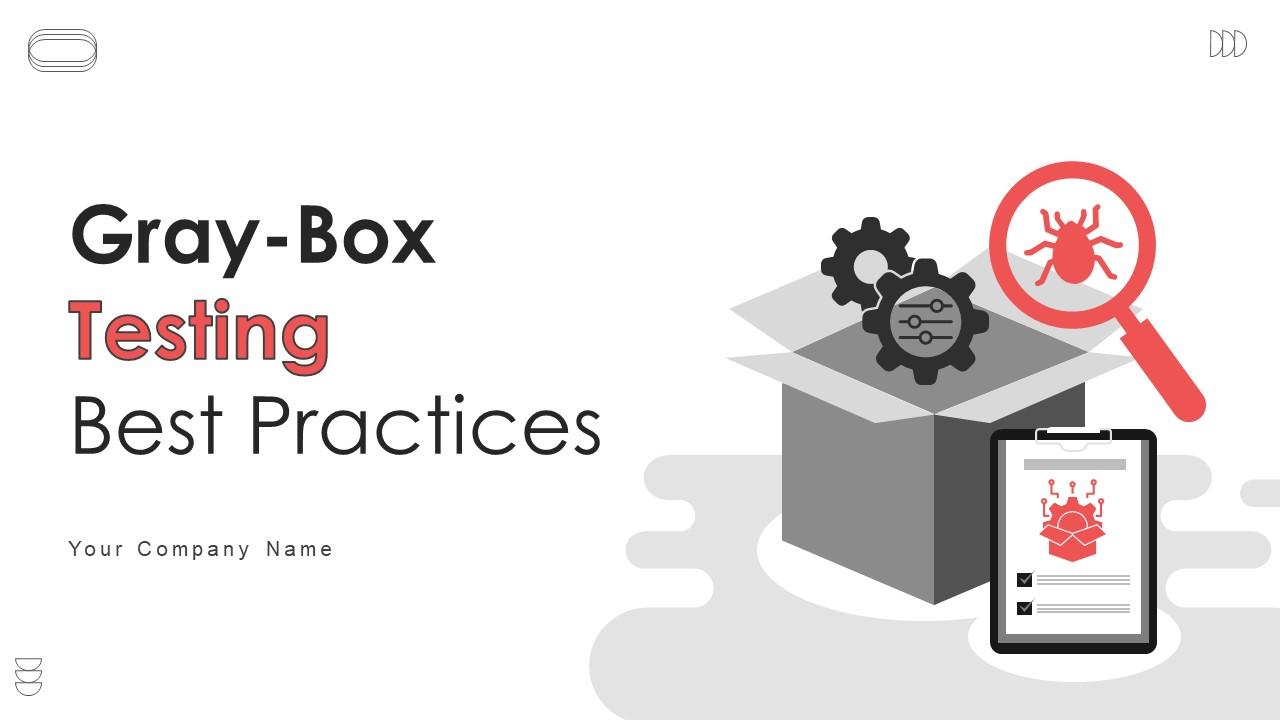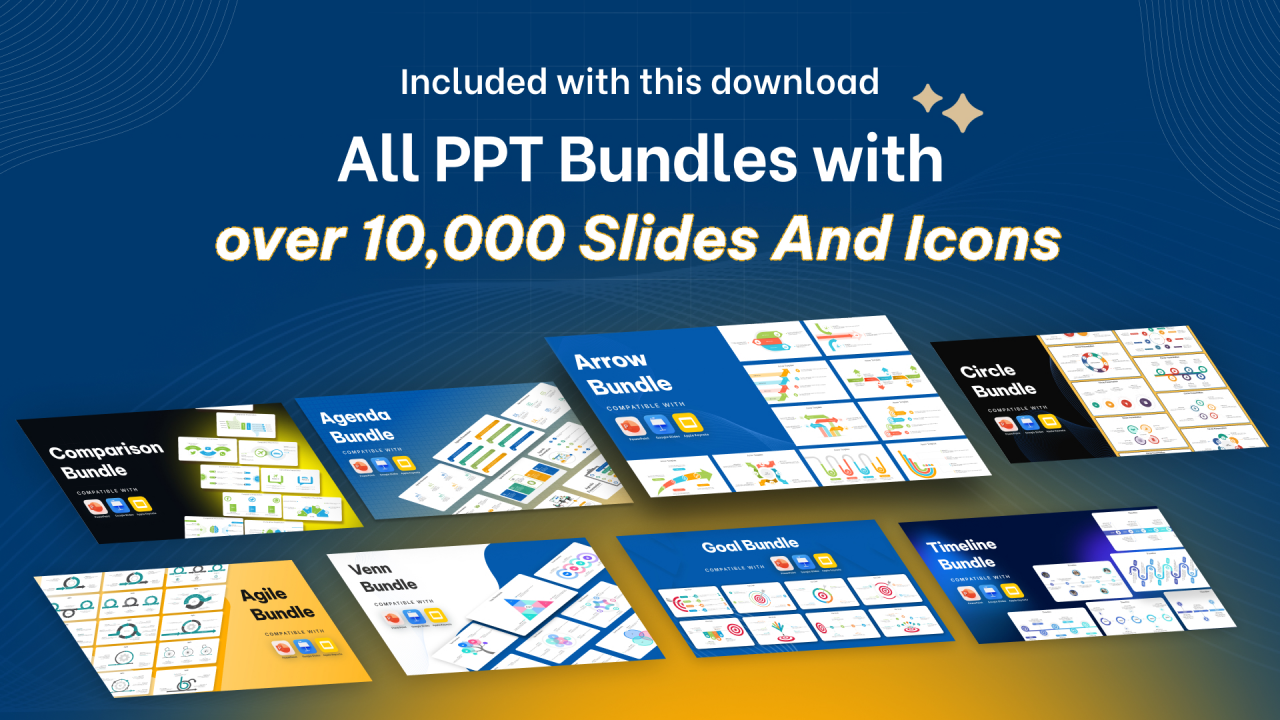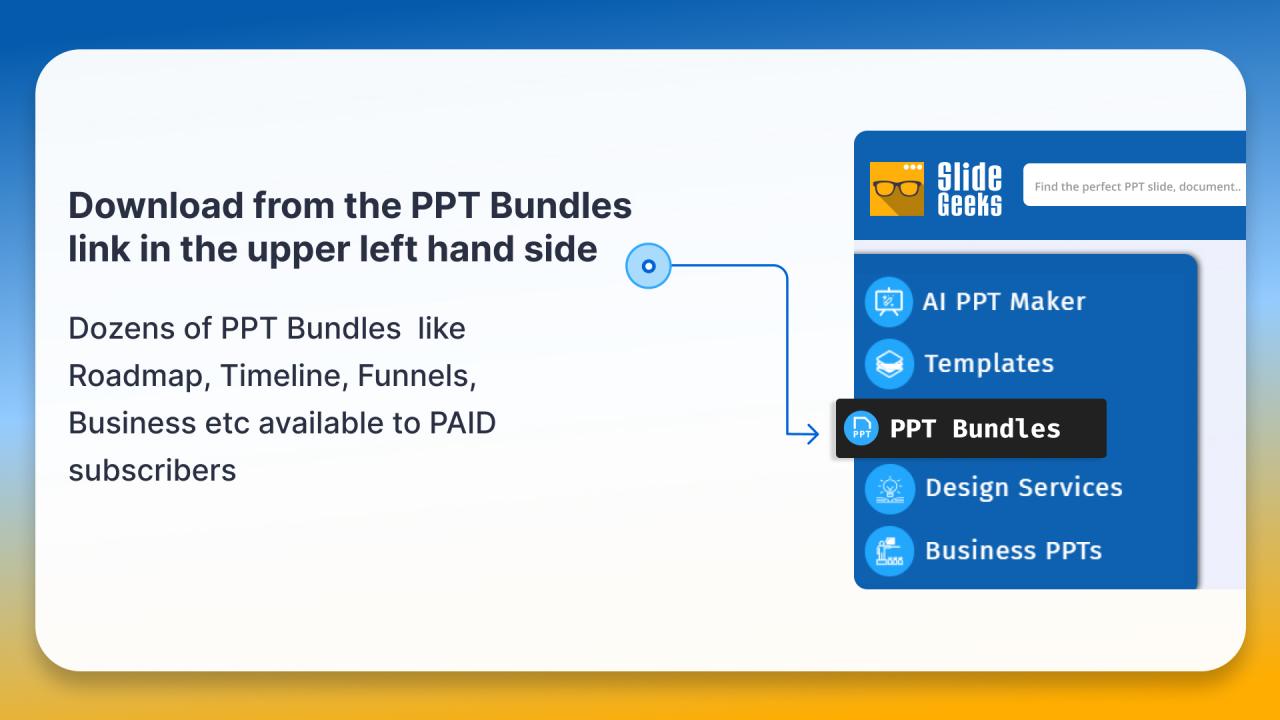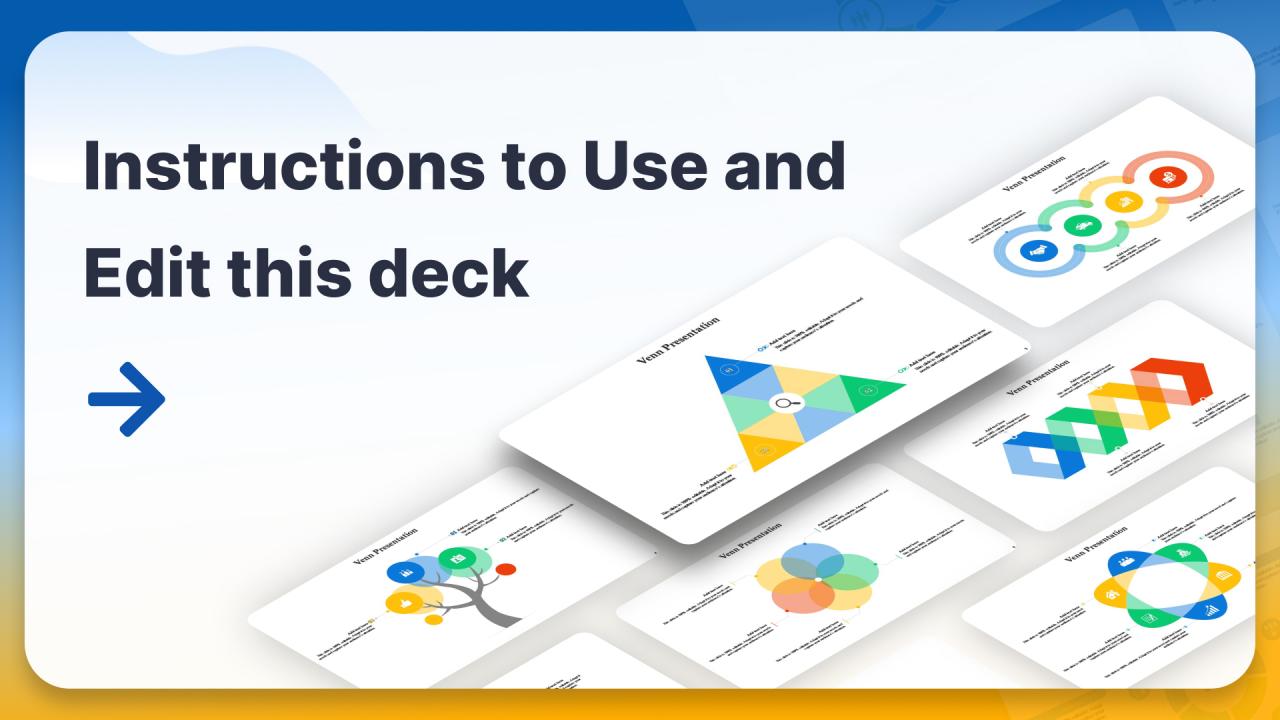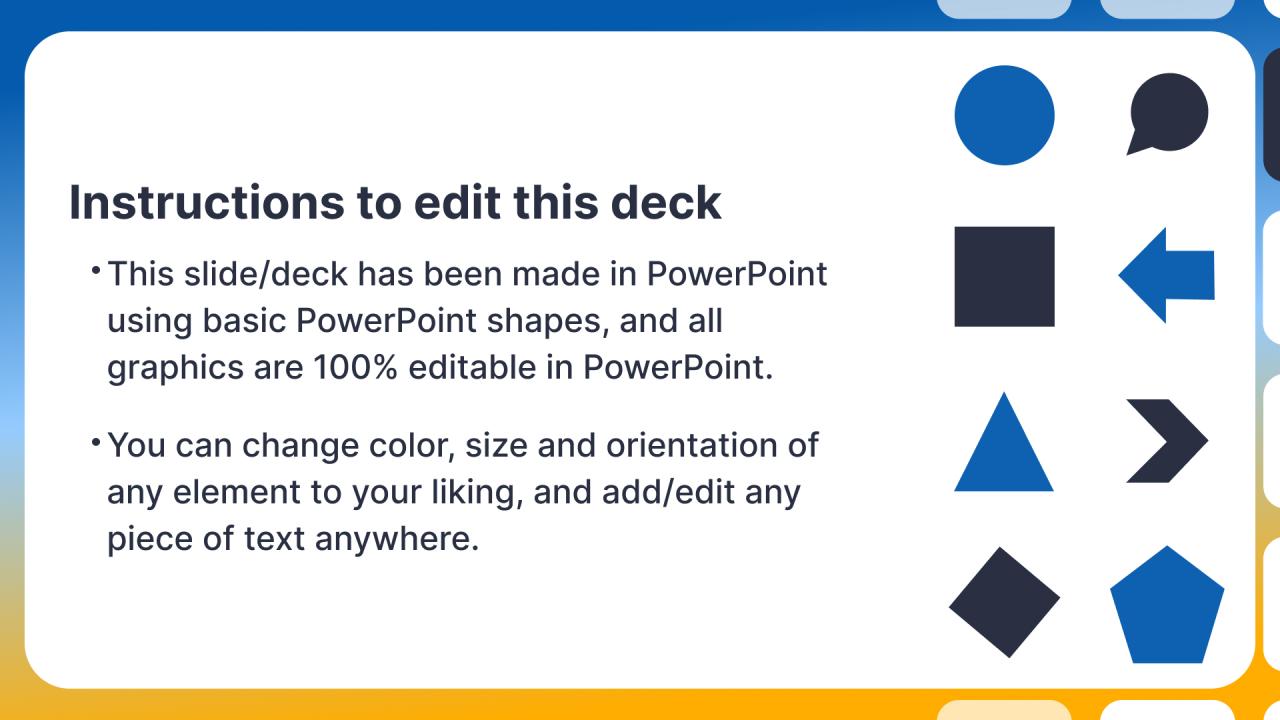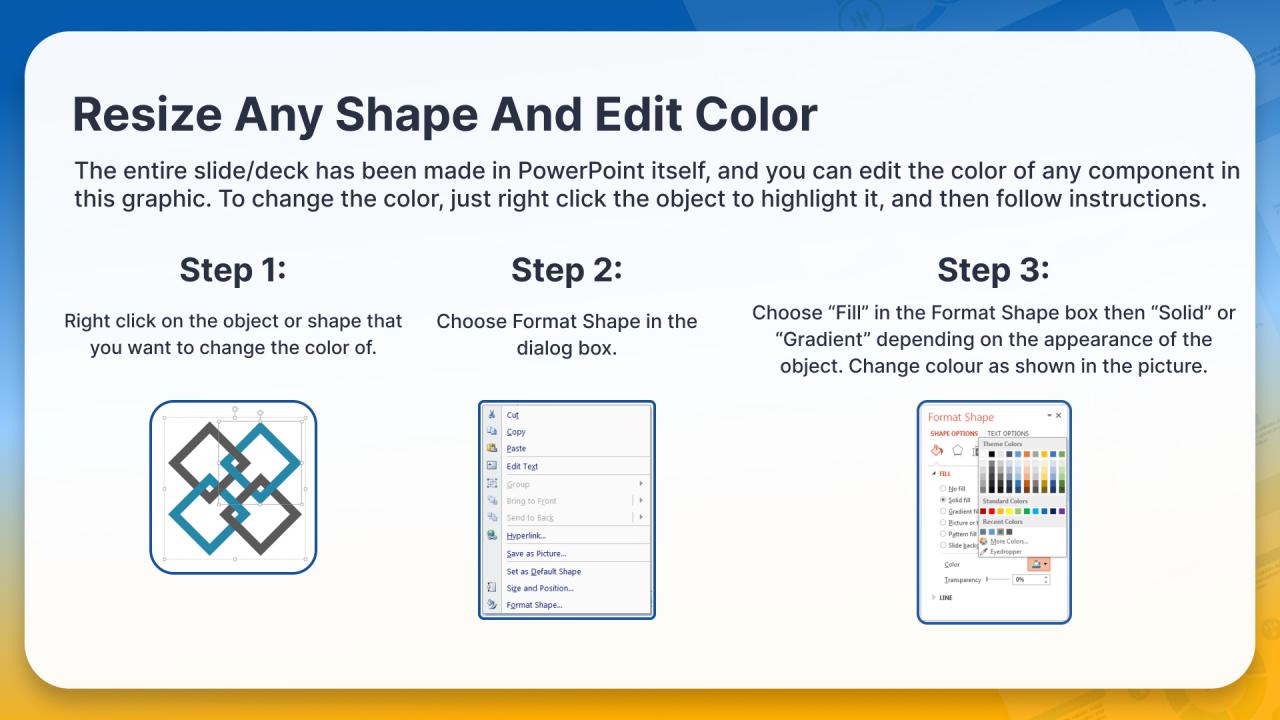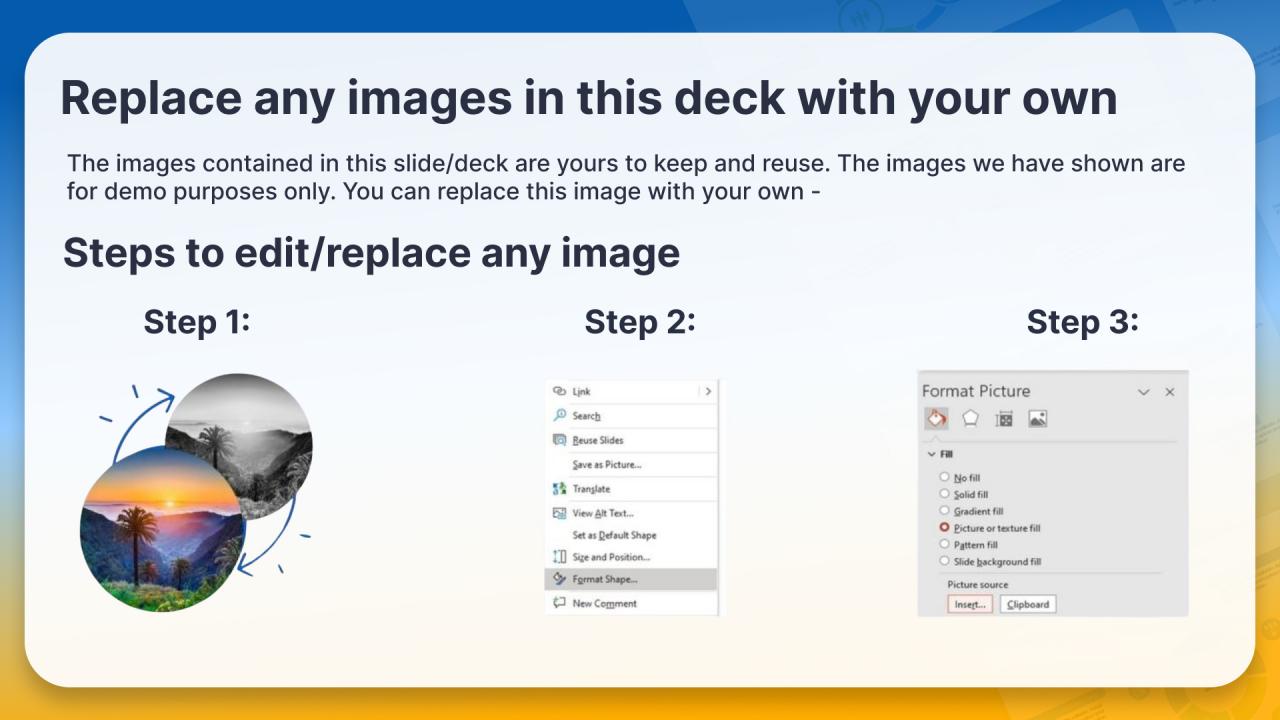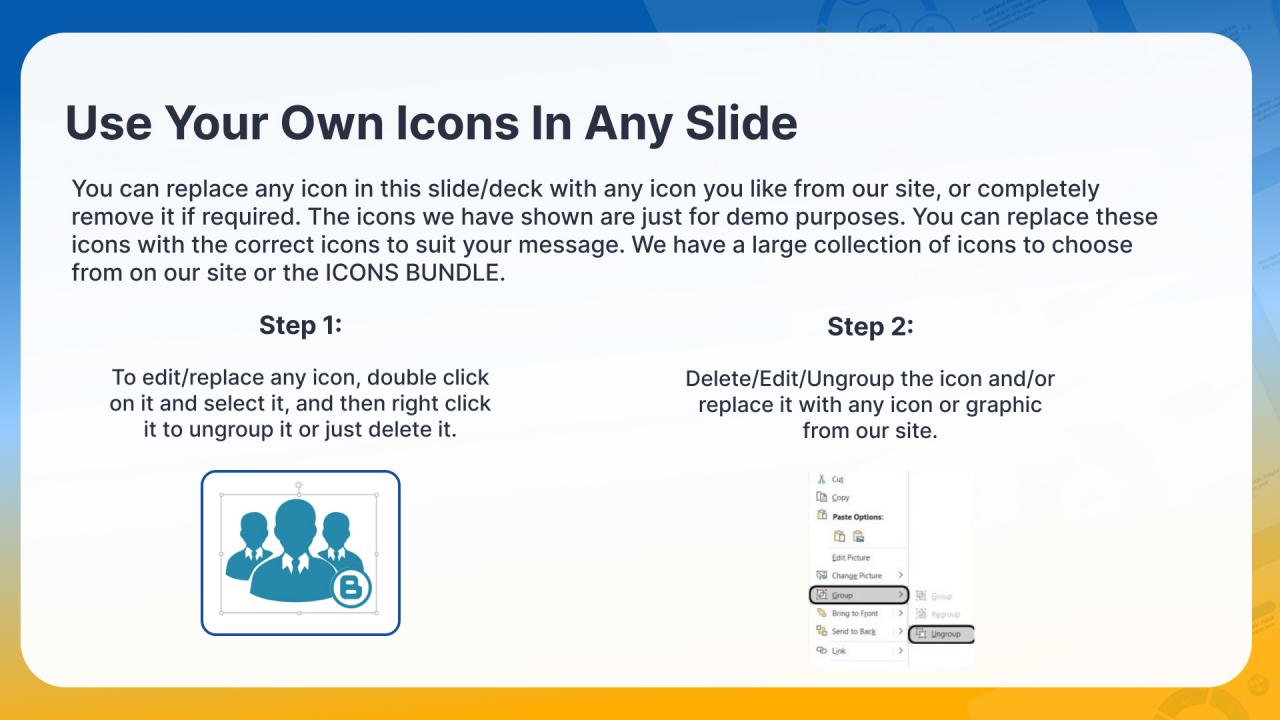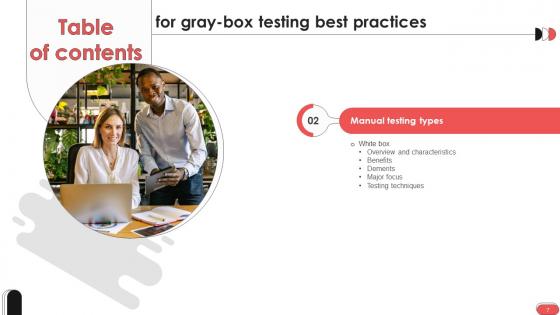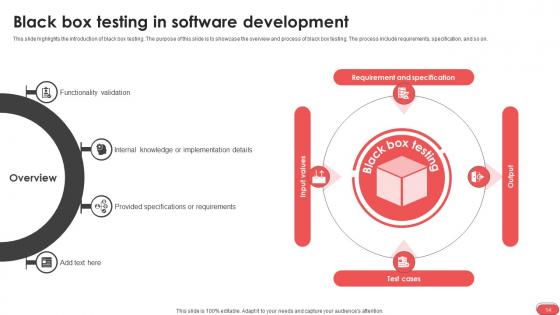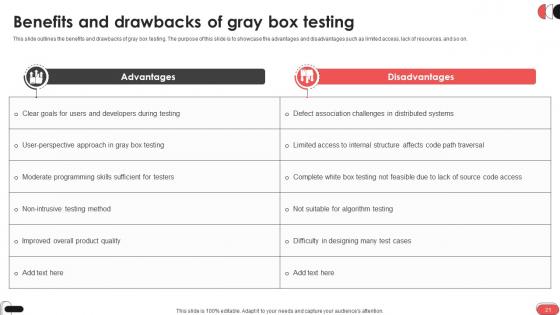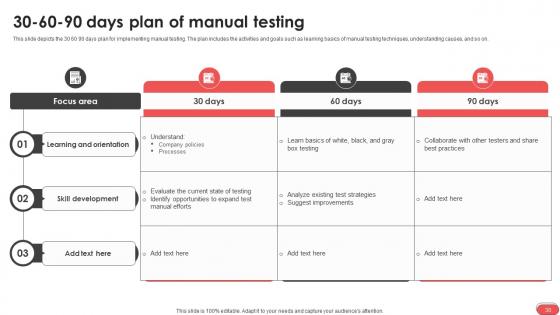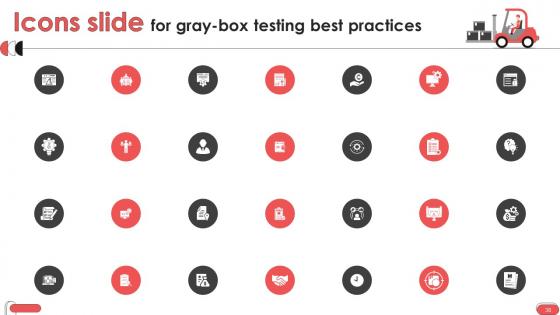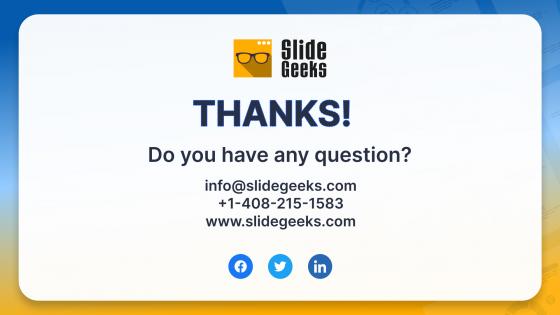Gray Box Testing Best Practices Ppt Powerpoint Presentation Complete Deck With Slides
Our Gray Box Testing Best Practices Ppt Powerpoint Presentation Complete Deck With Slides are topically designed to provide an attractive backdrop to any subject. Use them to look like a presentation pro.
- Google Slides is a new FREE Presentation software from Google.
- All our content is 100% compatible with Google Slides.
- Just download our designs, and upload them to Google Slides and they will work automatically.
- Amaze your audience with SlideGeeks and Google Slides.
-
Want Changes to This PPT Slide? Check out our Presentation Design Services
- WideScreen Aspect ratio is becoming a very popular format. When you download this product, the downloaded ZIP will contain this product in both standard and widescreen format.
-

- Some older products that we have may only be in standard format, but they can easily be converted to widescreen.
- To do this, please open the SlideGeeks product in Powerpoint, and go to
- Design ( On the top bar) -> Page Setup -> and select "On-screen Show (16:9)” in the drop down for "Slides Sized for".
- The slide or theme will change to widescreen, and all graphics will adjust automatically. You can similarly convert our content to any other desired screen aspect ratio.
Compatible With Google Slides

Get This In WideScreen
You must be logged in to download this presentation.
 Impress Your
Impress Your Audience
 100%
100% Editable
Google Slides
Features of these PowerPoint presentation slides:
People who downloaded this PowerPoint presentation also viewed the following :
Content of this Powerpoint Presentation
Slide 1: This slide introduces Gray-Box Testing Best Practices. State your company name and begin.
Slide 2: This slide states Agenda of the presentation.
Slide 3: This slide shows Table of Content for the presentation.
Slide 4: This slide highlights title for topics that are to be covered next in the template.
Slide 5: This slide discusses the introduction and testing methods of manual software testing. The purpose of this slide is to outline the overview and methods of testing which include static and dynamic.
Slide 6: This slide highlights the pros of implementing manual testing in software development. The purpose of this slide is to showcase the advantages of conducting manual software testing.
Slide 7: This slide highlights title for topics that are to be covered next in the template.
Slide 8: This slide discusses the introduction of white box software testing. The purpose of this slide is to showcase information about white box testing such as fields for examining, alternative names, and so on.
Slide 9: This slide highlights the pros of white box testing. The purpose of this slide is to showcase the different advantages such as completeness, unit testing, time optimization, and so on.
Slide 10: This slide discusses the drawbacks of white box testing. The purpose of this slide is to showcase the different disadvantages such as costly, code base variance, undone cases, and so on.
Slide 11: This slide represents the area of focus for white box testing in software development. The purpose of this slide is to highlight the primary emphasis of white box testing which include path checking, output validation, security testing, and so on.
Slide 12: This slide outlines the major techniques used for implementing white box testing in software development. The techniques for white box testing includes statement, branch, path coverage, and so on.
Slide 13: This slide highlights title for topics that are to be covered next in the template.
Slide 14: This slide highlights the introduction of black box testing. The purpose of this slide is to showcase the overview and process of black box testing. The process include requirements, specification, and so on.
Slide 15: This slide outlines the advantages and disadvantages of black box testing. The purpose of this slide is to highlight the benefits and drawbacks such as difficulty in implementation, hindering of test execution, and so on.
Slide 16: This slide discusses the different methods of performing black box testing. The techniques for implementing black box testing include equivalence class, boundary value testing, and so on.
Slide 17: This slide highlights the black box testing lifecycle and its phases. The purpose of this slide is to showcase the different phases of STLC which include requirement, test planning, test execution, and so on.
Slide 18: This slide represents the ways to perform black box testing and the tools used. The purpose of this slide is to outline the methods for performing black box testing and tools such as Appium, Selenium, Microsoft Coded UI, and so on.
Slide 19: This slide highlights title for topics that are to be covered next in the template.
Slide 20: This slide discusses the introduction of gray box testing. The purpose of this slide is to showcase the overview of gray box testing such as the approach followed, restricted awareness, and so on.
Slide 21: This slide outlines the benefits and drawbacks of gray box testing. The purpose of this slide is to showcase the advantages and disadvantages such as limited access, lack of resources, and so on.
Slide 22: This slide discusses the stages of conducting of gray box testing. The purpose of this slide is to showcase the steps such as selecting inputs, determining potential, isolating inputs, and so on.
Slide 23: This slide lists down the different tools used for gray box testing. The purpose of this slide is to showcase the characteristics of various tools used such as selenium, appium, and so on.
Slide 24: This slide highlights title for topics that are to be covered next in the template.
Slide 25: This slide represents the training schedule for IT teams in an organization to efficiently carry out manual testing. It includes the time slots for training, total days of training, and the modules to be covered in the training.
Slide 26: This slide showcases the breakdown cost for performing manual testing for software development. The purpose of this slide is to showcase the training cost breakdown for different components such as instructor, training cost, etc.
Slide 27: This slide showcases the breakdown cost for conducting manual testing. The purpose of this slide is to showcase the technology cost breakdown for different components such as test engineers, testing tools, etc.
Slide 28: This slide highlights title for topics that are to be covered next in the template.
Slide 29: This slide outlines the timeline for executing manual testing. The purpose of this slide is to showcase the different steps performed while implementing software testing, including preparation, strategy, test case design, and so on.
Slide 30: This slide depicts the 30 60 90 days plan for implementing manual testing. The plan includes the activities and goals such as learning basics of manual testing techniques, understanding causes, and so on.
Slide 31: This slide outlines the deployment for software testing. The purpose of this slide is to highlight the steps that an organization should take while implementing software testing including, analysing static code, unit testing and so on.
Slide 32: This slide showcases the performance tracking dashboard for automation testing. The purpose of this slide is to highlight the performance of automation testing by including components such as total builds, failed builds, etc.
Slide 33: This slide highlights title for topics that are to be covered next in the template.
Slide 34: This slide showcases the comparative analysis of the before versus after automation testing situation of the software. The purpose of this slide is to showcase the different performance metrics and how software testing has improved these metrics.
Slide 35: This slide showcases the after manual testing impact on business operations. It highlights the various factors that have improved the overall software performance by reducing time of release, rapid defect detection, and so on.
Slide 36: This slide highlights title for topics that are to be covered next in the template.
Slide 37: This slide represents the manual testing case study of KiwiQA team in an organization. The purpose of this slide is to give an overview of the problems faced, their solutions, and advantages involved in the case study.
Slide 38: This slide contains all the icons used in this presentation.
Slide 39: This slide is titled as Additional Slides for moving forward.
Slide 40: This is Our Mission slide with related imagery and text.
Slide 41: This is Our Team slide with names and designation.
Slide 42: This slide shows Post It Notes. Post your important notes here.
Slide 43: This slide depicts Venn diagram with text boxes.
Slide 44: This is a Timeline slide. Show data related to time intervals here.
Slide 45: This is a Thank You slide with address, contact numbers and email address.
Gray Box Testing Best Practices Ppt Powerpoint Presentation Complete Deck With Slides with all 53 slides:
Use our Gray Box Testing Best Practices Ppt Powerpoint Presentation Complete Deck With Slides to effectively help you save your valuable time. They are readymade to fit into any presentation structure.
Most Relevant Reviews
-
Perfect template with attractive color combination.
-
Informative design.

 Home
Home 